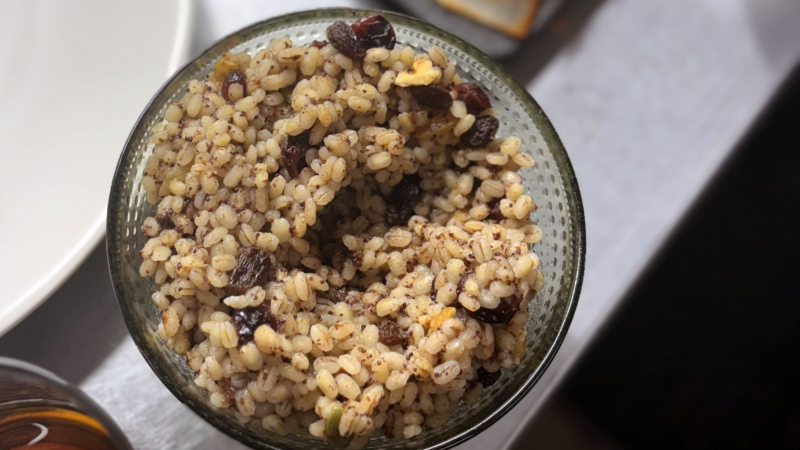Hostess to the Civil Rights Movement
William Dahlberg | April 15, 2013
========= Old Image Removed =========Array
(
[_wp_attached_file] => Array
(
[0] => 2013/04/civil-rights.jpg
)
[_wp_attachment_metadata] => Array
(
[0] => a:5:{s:5:"width";i:587;s:6:"height";i:395;s:4:"file";s:24:"2013/04/civil-rights.jpg";s:5:"sizes";a:6:{s:6:"medium";a:4:{s:4:"file";s:24:"civil-rights-336x226.jpg";s:5:"width";i:336;s:6:"height";i:226;s:9:"mime-type";s:10:"image/jpeg";}s:9:"thumbnail";a:4:{s:4:"file";s:24:"civil-rights-140x140.jpg";s:5:"width";i:140;s:6:"height";i:140;s:9:"mime-type";s:10:"image/jpeg";}s:9:"wbhm-icon";a:4:{s:4:"file";s:22:"civil-rights-80x80.jpg";s:5:"width";i:80;s:6:"height";i:80;s:9:"mime-type";s:10:"image/jpeg";}s:18:"wbhm-featured-home";a:4:{s:4:"file";s:24:"civil-rights-462x311.jpg";s:5:"width";i:462;s:6:"height";i:311;s:9:"mime-type";s:10:"image/jpeg";}s:22:"wbhm-featured-carousel";a:4:{s:4:"file";s:24:"civil-rights-394x265.jpg";s:5:"width";i:394;s:6:"height";i:265;s:9:"mime-type";s:10:"image/jpeg";}s:14:"post-thumbnail";a:4:{s:4:"file";s:24:"civil-rights-125x125.jpg";s:5:"width";i:125;s:6:"height";i:125;s:9:"mime-type";s:10:"image/jpeg";}}s:10:"image_meta";a:12:{s:8:"aperture";s:1:"0";s:6:"credit";s:0:"";s:6:"camera";s:0:"";s:7:"caption";s:0:"";s:17:"created_timestamp";s:1:"0";s:9:"copyright";s:0:"";s:12:"focal_length";s:1:"0";s:3:"iso";s:1:"0";s:13:"shutter_speed";s:1:"0";s:5:"title";s:0:"";s:11:"orientation";s:1:"0";s:8:"keywords";a:0:{}}}
)
[_imagify_optimization_level] => Array
(
[0] => 1
)
[_imagify_data] => Array
(
[0] => a:2:{s:5:"stats";a:3:{s:13:"original_size";i:433552;s:14:"optimized_size";i:395293;s:7:"percent";d:8.8200000000000003;}s:5:"sizes";a:9:{s:4:"full";a:5:{s:7:"success";b:1;s:8:"file_url";s:52:"https://news.wbhm.org/media/2013/04/civil-rights.jpg";s:13:"original_size";i:136419;s:14:"optimized_size";i:105935;s:7:"percent";d:22.350000000000001;}s:9:"thumbnail";a:5:{s:7:"success";b:1;s:8:"file_url";s:60:"https://news.wbhm.org/media/2013/04/civil-rights-140x140.jpg";s:13:"original_size";i:10780;s:14:"optimized_size";i:10542;s:7:"percent";d:2.21;}s:6:"medium";a:5:{s:7:"success";b:1;s:8:"file_url";s:60:"https://news.wbhm.org/media/2013/04/civil-rights-336x226.jpg";s:13:"original_size";i:35335;s:14:"optimized_size";i:34609;s:7:"percent";d:2.0499999999999998;}s:9:"wbhm-icon";a:5:{s:7:"success";b:1;s:8:"file_url";s:58:"https://news.wbhm.org/media/2013/04/civil-rights-80x80.jpg";s:13:"original_size";i:4018;s:14:"optimized_size";i:3852;s:7:"percent";d:4.1299999999999999;}s:13:"wbhm-featured";a:5:{s:7:"success";b:1;s:8:"file_url";s:60:"https://news.wbhm.org/media/2013/04/civil-rights-587x338.jpg";s:13:"original_size";i:91488;s:14:"optimized_size";i:88608;s:7:"percent";d:3.1499999999999999;}s:20:"wbhm-featured-square";a:5:{s:7:"success";b:1;s:8:"file_url";s:60:"https://news.wbhm.org/media/2013/04/civil-rights-300x300.jpg";s:13:"original_size";i:40026;s:14:"optimized_size";i:38982;s:7:"percent";d:2.6099999999999999;}s:18:"wbhm-featured-home";a:5:{s:7:"success";b:1;s:8:"file_url";s:60:"https://news.wbhm.org/media/2013/04/civil-rights-462x311.jpg";s:13:"original_size";i:60225;s:14:"optimized_size";i:58850;s:7:"percent";d:2.2799999999999998;}s:22:"wbhm-featured-carousel";a:5:{s:7:"success";b:1;s:8:"file_url";s:60:"https://news.wbhm.org/media/2013/04/civil-rights-394x265.jpg";s:13:"original_size";i:46357;s:14:"optimized_size";i:45242;s:7:"percent";d:2.4100000000000001;}s:14:"post-thumbnail";a:5:{s:7:"success";b:1;s:8:"file_url";s:60:"https://news.wbhm.org/media/2013/04/civil-rights-125x125.jpg";s:13:"original_size";i:8904;s:14:"optimized_size";i:8673;s:7:"percent";d:2.5899999999999999;}}}
)
[_imagify_status] => Array
(
[0] => success
)
)
1672509949
1365984000
The best remembered images of the Civil Rights Movement in Alabama are of fire hoses and police dogs in Birmingham and officers attacking marchers crossing the Edmund Pettus Bridge in Selma. But today we bring you the story of one woman working to preserve the behind- the-scenes role her house played in the movement’s history. WBHM’s Will Dahlberg has the story.
Richie Jean Jackson’s book is The House by the Side of the Road.







